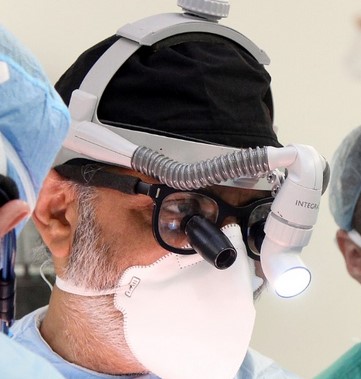
 As the saying goes, an ounce of prevention is worth a pound of cure.
As the saying goes, an ounce of prevention is worth a pound of cure.
While not all heart conditions can be prevented, controlling risk factors can go a long way to staying healthy, said Dr. Raj Bose, cardiothoracic surgeon at Tucson Medical Center. Dr. Bose specializes in surgical procedures of the heart, lungs and other organs in the chest with the goal of giving patients a longer life with better quality.
Most people have heard the term “heart disease” but what does that really mean?
Heart disease refers to several types of heart conditions such as coronary artery disease, heart valve disease, aortic aneurysm and others. The one thing these conditions have in common, is you can often reduce your risk with lifestyle changes.
- Coronary artery disease: This is the buildup of plaque in the arteries that supply oxygen-rich blood to your heart. Plaque causes blockage that can lead to heart attack. Symptoms include chest pain or discomfort and shortness of breath.
- Heart valve disease: In heart valve disease, one or more of the valves in your heart doesn’t work properly. This can cause the blood flow through your heart to your body to be disrupted. Symptoms include fatigue, dizziness, irregular heartbeat, heart murmur and chest pain.
- Aortic aneurysm: This is a bubble that forms in the aorta. It can make the wall weak and prone to tears or ruptures. Many patients don’t have symptoms, but if they do, a thoracic aortic aneurysm can cause pain in the jaw, neck or upper back and coughing. An abdominal aortic aneurysm can produce symptoms such as a tender mass felt by a physician or pain in the back, abdomen or groin that is not relieved with position change or medication.
Managing your risks
While some risk factors such as family history are out of your control, there are variables that you can control. “The most important thing is to assess your risks,” Dr. Bose said. “If you have family history or other risk factors, you should get a screening, and try to modify your life.”
- Keep blood pressure in check: A normal blood pressure level is less than 120/80 mmHg. Keeping a healthy weight, exercise and eating lower sodium foods are natural ways to lower blood pressure. Also, make sure to take medicines as prescribed by your doctor.
- Don’t smoke: Smoking can increase your heart rate, tighten major arteries and cause irregular heart rhythm, all of which make your heart work harder. If you do smoke, talk to your doctor about ways to quit.
- Choose healthy foods: Limit foods that are high in saturated fats, trans fats, cholesterol, sodium and added sugar.
- Move your body: “You don’t have to have a gym membership,” Dr. Bose said. “Just don’t be sedentary. Do simple activities, such as going for a walk, every day.